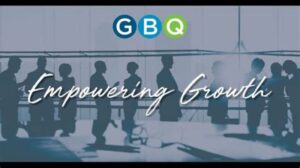How to Find and Capture New Markets Without False Starts
Have you ever been stuck in the rut of “internally focused innovation?” That is, caught in a trap of only being able to generate ideas that are either “me-too” or just more of what you’re already doing?
The key to success with innovation is to shift your focus away from generating ideas to helping your customers get their jobs done better. Darci Congrove, Managing Director at GBQ Partners, said it well:
“We were contemplating developing a strategic plan to double the size of the firm and came up with a lot of good ideas but most of them were around how to do what we were already doing better as opposed to how we can add something new. We realized that sitting in our offices trying to make up lists of things that we could sell probably wasn’t the right approach. That’s when we (decided) to figure out what people wanted to buy rather than what we wanted to sell.”
This is the third article in a 4-part series. You may want to check out the first article – 3 Growth Strategies JTBD Makes Easy – to see the brief overview on Jobs-to-Be-Done (JTBD). The three growth strategies I introduced are:
-
- To grow a core market, help customers get a core job done better
- To find and capture new markets, help customers get their other related jobs done better
- To create a seamless and delightful customer experience, help customers obtain the value of your product or service better
Today, I’d like to show you how GBQ Partners (a regional accounting and consulting firm headquartered in Columbus OH) found and captured new market opportunities by helping their target customers get other related jobs done, i.e., growth strategy #2. (See the full case study).

The Challenge
Due to an influx of new entrants, tax and accounting services had become ultra-competitive in Central Ohio. Compliance work was already perceived by many to be a commodity, and now new competitors were offering work at below-market rates to gain a foothold. This eroded GBQ’s margins and made it difficult for the firm to grow at its desired rate. The partners were eager to create new offerings to generate revenue but were unclear what customers would value. Additionally, the partners wanted to create new service lines to provide their associates with alternative career paths. But first, the firm had to identify the financial and accounting-related tasks target customers wanted to get done to guide the creation of new services.
The Solution
The big idea behind JTBD is that it enables us to decouple customer needs from products and services. Customers can tell us what they want if we ask them what they want to accomplish rather than asking for product or service specifications. This shatters the myth that “customers have latent unarticulated needs, needs that they cannot articulate.” The reason this misbelief persists is because people are confusing customer needs with product and service solutions. It is true that customers cannot tell us what solution they want. That’s our job and should be based on what our customers want to accomplish.
With JTBD, firms can now obtain a comprehensive set of their target customers’ needs in virtually any functional market independent of products and services. Those needs that are important and unsatisfied are opportunities for innovation and growth. The more important and less satisfied a need is, the greater the opportunity for innovation and growth it presents. This enables companies to identify and rank the biggest opportunities in their markets with precision and statistical validity (if desired). This can change the game for any organization that serves complex functional markets. This is how a Can Am Off-Road Vehicles, for example, was able to upgrade its entire side-by-side product line including nine different vehicle platforms and over 70 different models. Try doing that without JTBD.
Your market, business model, and objectives will indicate which of the three growth strategies makes the most sense for you. To make that determination, I always like to start with the framework Theodore Levitt gives us in his famous quote, “People don’t want to buy a ¼” drill; they want a ¼” hole!” This quote illustrates three important truths that apply to every market, product, and service:
-
- Customer needs are separate and distinct from products and services
- At a high level, customer needs are the jobs they’re trying to get done (there are also customers’ criteria for success to get a job done)
- For the purpose of innovation, a market is best defined as “a group of target customers who share a common desire to get a job or jobs done.”
Levitt’s framework gives a template to redefine markets from the customers’ point of view. Remember, customers don’t care about our products or services; they just want to get their jobs done. GBQ was clear about their target customers: “CEOs and CFOs in mid-sized privately held companies.” But they didn’t know where to focus. Based on their expertise, it was agreed that the firm can address most of the “financial and accounting-related” tasks that CEOs and CFOs are trying to get done in the course of their work. Using Levitt’s framework, we can then say that “CEOs and CFOs in mid-sized privately held companies don’t want to buy accounting services; they want to get their financial and accounting-related jobs done!” And this defines the market.
Consequently, we set out to discover all the important and unsatisfied financial and accounting-related jobs CEOs and CFOs are trying to get done in the course of their work. We conducted 26 interviews with CEOs and CFOs, including a mix of GBQ clients and non-clients, and discovered dozens of financial and accounting-related tasks that are important to them to get done but that were not getting done to their satisfaction. For example, we found the CEOs and CFOs want to:
-
- Determine the profitability of existing products
- Manage/predict cash flow
- Plan for succession
- Etc.
Every important and unsatisfied job to be done is a “blue ocean” new market opportunity – pretty cool!

With a list of opportunities in hand, the next step was for Reveal to facilitate a working session with the partners to identify and select those opportunities that were most attractive for the firm to pursue for new value creation. Virtually every great growth strategy and new product is formulated by addressing a big unmet need in the market with the firm’s relative strengths. That’s exactly what this process enables firms to do in a systematic manner.
By evaluating the opportunities according to an agreed upon mutually exclusive and comprehensively exhaustive set of criteria such as strategic fit, revenue opportunity, etc., GBQ was able to then select the best opportunities to pursue before going into ideation.
Additionally, since GBQ was evaluating the market opportunities totally separate and distinct from any products or services, GBQ also had an opportunity to determine the best way to create and capture value when pursuing each new market such as build it internally, buy it, or partner. The output from this working session was a short list of the most attractive opportunities selected for pursuit and the best way to address each. Those opportunities that were best addressed by building the solution were categorized into four themes and made ready for focused brainstorming.
Focused brainstorming is very different from traditional brainstorming. In focused brainstorming, the firm has 1) already identified and validated the biggest opportunities in the market, and 2) evaluated and selected the most attractive opportunities to pursue. That means that, in focused brainstorming, the firm knows where to focus and what they have to do to create new value. This enables firms to focus their creativity and expertise on only the best opportunities in the market and avoid wasting time, money, and resources generating, vetting, and developing a lot of “bad” ideas.
Any idea that does not address an important unsatisfied customer need that has been selected for pursuit is a “bad” idea. That’s because any other idea will almost definitely fail due to being unimportant, already well-satisfied, or because it is not well-aligned with the firms business strategy and strengths. One of the strengths of JTBD is that it is always aligned with the business strategy. It informs companies about “where to play” and “how to win.”
The Results
Three new service lines came out of the ideation and two were successfully commercialized. Additionally, GBQ entered into a joint venture with a temporary staffing firm to address its clients’ need for seasonable help. GBQ also purchased a technology/cyber security consulting firm because this also addressed an important unsatisfied job to be done.
Lastly, Jobs Thinking had a positive impact on the firm’s culture as well. Darci Congrove, Managing Director, explains:
“One of the most important things that came out of our work…was a shift in our mentality from focusing on what we know how to do, to what the client is trying to get done. Instead of saying “Here’s the audit report,” now we ask, “What is the client trying to get done with the audit report and how can we provide good business advice along with that work product?”
The growth strategy that GBQ employed – to find and capture new market opportunities by helping target customers get other related jobs done better – can be applied by virtually any organization that seeks to help its target customers get a bunch of jobs done with the firm’s “platform.” GBQ’s platform is its financial and accounting expertise. Platforms can take many forms. A “platform” is the firm’s capability or delivery system that enables its customers to get numerous jobs done.
For another client – a private airline – wanted to create a business-centric service for “C-level leaders who travel frequently for work on company-owned jets.” Their platform is their fleet of private jets. The growth strategy, in that case, was to talk with those C-level leaders to discover all the important unsatisfied functional, emotional, and social jobs they’re trying to get done with their private jets. Knowing these target customers’ Important unsatisfied JTBD enabled the company to a create differentiated value, specifically, to create a “unique business-centric service with premium pricing.”
This strategy also works well for professional associations. For example, the Society of Human Resources Management (SHRM) used this approach to drive membership growth and non-dues revenue. They did it by discovering all the important unsatisfied jobs that HR professionals are trying to get done in the course of their work, and then targeting the best opportunities for new value creation.
This approach also enabled the National Fire Protection Association (NFPA) to identify all the important unsatisfied jobs that each of its three key customers – inspectors, contractors, and designers (architects/engineers) – are trying to get done related to codes and standards. This growth strategy (like all three) tees up qualified opportunities so that any organization can then address them with clarity and confidence.
It’s worth noting that a chief reason for Apple’s phenomenal success with the iPhone is that it provides us all with a super-platform than enables us to get thousands (millions?) of jobs done with an app.
Is there any better way to differentiate and grow in a reliable manner than to first gain a solid understanding of your customers’ important unsatisfied jobs?
Thoughts or comments? Drop me an email at uw@revealgrowth.com.




